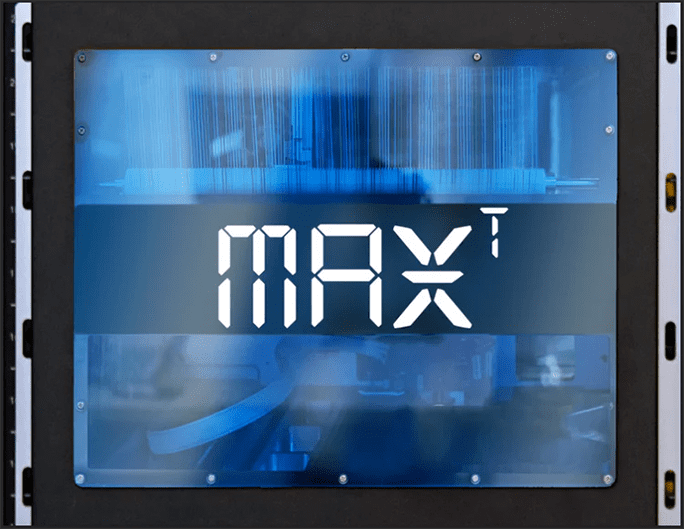Executive Summary
Artificial Intelligence (AI) is reshaping industries, from autonomous systems to predictive analytics, driving an unprecedented demand for high-performance data centers. These facilities require ultra-low latency, massive bandwidth, and flawless reliability to support AI workloads like training large language models or processing real-time inference. Yet, traditional manual fiber optic management struggles to meet these needs, introducing delays, errors, and scalability bottlenecks. FiberSmart’s Robotic Optical Management Engine (ROME) systems offer a breakthrough by automating physical-layer connectivity, enabling AI data centers to achieve peak efficiency and adaptability. This whitepaper presents a use case demonstrating ROME’s impact on next-generation AI infrastructure.
Introduction
AI data centers are the engines of modern innovation, processing petabytes of data at lightning speed to power applications like machine learning, generative AI, and edge computing. At their core, fiber optic networks deliver the high-speed, high-capacity connectivity these workloads demand. However, the physical layer—where fibers are patched and maintained—remains a critical weak point. Manual processes slow reconfiguration, increase downtime, and hinder the rapid scaling required for AI’s exponential growth.
FiberSmart’s ROME systems address these challenges with robotic automation, replacing human intervention with precision and speed. By integrating ROME, AI data centers can support the relentless pace of AI development while reducing costs and enhancing reliability. This paper explores how ROME transforms AI infrastructure through a practical use case.
The Challenge: Limitations of Manual Fiber Management in AI Data Centers
AI workloads impose unique pressures on data center infrastructure, exposing the shortcomings of traditional fiber management:
- Latency Sensitivity: Manual patching delays network adjustments, introducing latency unacceptable for real-time AI applications like autonomous vehicles or live fraud detection.
- Scalability Constraints: Training massive AI models requires dynamic provisioning of server clusters, a process slowed by labor-intensive fiber reconfiguration.
- Downtime Risks: Human errors in patching—responsible for up to 75% of network outages—disrupt AI workflows, delaying model deployment and impacting revenue.
- Resource Intensity: The need for on-site technicians drives up operational costs, especially in distributed edge AI data centers serving IoT or 5G networks.
- Data Surge: The explosive growth of AI-generated data demands flexible, high-capacity networks that manual systems struggle to sustain.
These issues highlight the urgent need for an automated, intelligent approach to physical-layer management in AI data centers.
The Solution: FiberSmart’s ROME Systems
FiberSmart’s ROME systems bring robotic precision to fiber optic connectivity, tailored to the demands of AI infrastructure. Key features include:
- Robotic Automation: Dual robots execute fiber patching and splicing in seconds, ensuring error-free connections at scale.
- Scalable Capacity: Units like the ROME 500 (512 fibers) and ROME MAX (2,000 fibers) adapt to both compact edge sites and hyperscale facilities.
- Remote Control: A cloud-based, drag-and-drop GUI enables operators to reconfigure networks instantly, supporting dynamic AI workloads from anywhere.
- Real-Time Monitoring: Sensors track connection health and utilization, providing analytics to optimize performance and preempt failures.
- Zero-Touch Resilience: ROME autonomously reroutes traffic around faults, minimizing downtime without human input.
By deploying ROME, AI data centers can achieve the speed, flexibility, and uptime required to lead in the AI revolution.
Use Case: Powering an AI Data Center
Scenario
A technology firm operates a network of AI data centers to develop and deploy large-scale machine learning models for clients in healthcare, finance, and autonomous systems. With facilities ranging from a central hyperscale hub to distributed edge sites, the firm processes terabytes of data daily. However, its reliance on manual fiber management hampers performance, with frequent delays in scaling compute resources and costly outages disrupting AI training pipelines.
Implementation
- Deployment: ROME MAX units are installed in the central data center to manage 2,000 fibers, while ROME 500 units support edge sites with 512 fibers each, integrating seamlessly into existing racks.
- Management: AI engineers use ROME’s secure, cloud-based interface to allocate bandwidth dynamically—e.g., provisioning additional servers for a sudden spike in model training demand.
- Automation: ROME robots handle all physical connections, scaling clusters in under a minute to support parallel processing for a 100-billion-parameter AI model.
- Monitoring: Embedded sensors detect a degrading fiber during a critical inference task, triggering an automatic reroute to maintain sub-millisecond latency.
- Analytics: Utilization data from ROME informs capacity planning, ensuring the data center adapts to a projected 50% increase in AI workloads over the next year.
Results
- Low Latency: Network adjustments occur in seconds, supporting real-time AI tasks with latency below 1 millisecond—e.g., enabling instant diagnostics in healthcare AI.
- Scalability: ROME scales compute resources 50x faster than manual methods, cutting model training time from weeks to days.
- Uptime: Automated fault detection and rerouting reduce downtime by 90%, ensuring uninterrupted service during a client’s high-stakes financial forecasting run.
- Cost Savings: Eliminating on-site patching saves $750,000 annually across the network, redirecting funds to GPU upgrades.
- Future-Proofing: ROME’s capacity and flexibility handle a doubling of edge AI traffic, driven by IoT and 5G growth, without hardware overhauls.
Real-World Impact
During a peak load event, a client requests urgent retraining of a fraud detection model due to an emerging threat. The firm uses ROME to reallocate 200 fibers to a new GPU cluster remotely, completing the shift in 40 seconds. The model is retrained and deployed in hours instead of days, thwarting a multimillion-dollar fraud attempt and reinforcing client trust.
Benefits for AI Data Centers
- Speed: Instantaneous fiber adjustments match the pace of AI innovation.
- Reliability: Zero-touch automation eliminates human error, ensuring continuous operation.
- Efficiency: Reduced labor and downtime lower costs, maximizing ROI on AI investments.
- Adaptability: Dynamic scaling supports fluctuating workloads, from training to inference.
- Edge Enablement: Compact ROME units empower distributed AI at the edge, critical for IoT and real-time applications.
Conclusion
FiberSmart’s ROME systems redefine AI data center performance by automating the physical layer with robotic precision. In an era where AI drives competitive advantage, ROME delivers the speed, reliability, and scalability needed to stay ahead. By minimizing latency, eliminating bottlenecks, and enabling seamless growth, ROME positions AI data centers as the backbone of tomorrow’s intelligent systems—accelerating breakthroughs that shape our world.











